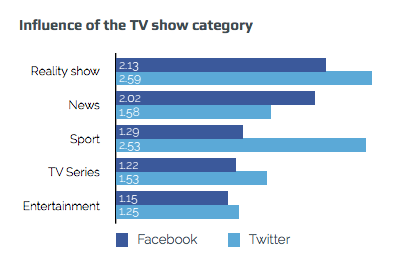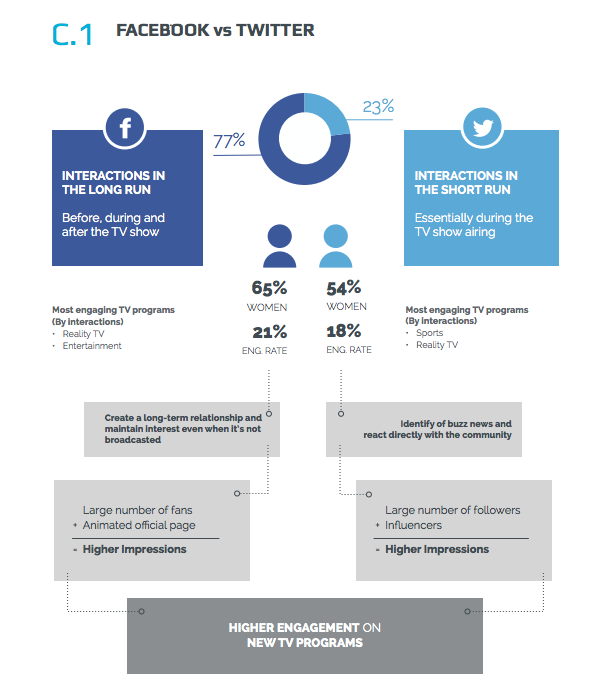A new whitepaper on the state of social TV in Canada reveals that Canadian television viewers generated nearly 57 million impressions via social networks like Facebook and Twitter, over the first three months of 2014.
The new data comes from Montreal startup Seevibes, which measures, analyzes and predicts social television statistics.
Most simply, viewers, like everyday Canadians, use social media to compare their reactions. This phenomenon is called “social TV,” and 65 percent of Twitter users and 36 percent of Facebook users in Canada are discussing television. The whitepaper mainly tries to explain how television advertisers can take advantage of this and target more engaged viewers.
Some of the more interesting pieces of data that the whitepaper revealed was that 55 percent of Canadians are using Facebook at least once a
month, and 12 percent with Twitter, and TV is one of the main topics of conversation.
An “interaction” as it pertains to television is either a post, comment or like on Facebook or a tweet or retweet on Twitter. Of those 57 million interactions generated by Canadians in Q1, over three-quarters came on Facebook (77 percent), with 23 percent coming in Twitter. However, Canadians generated interactions on Twitter 63 percent more than the year before, much higher than the combined 12 percent growth of both Twitter and Facebook.
“In 2014, the Olympic Games had a massive impact on the engagement level. Sports are a widely commented TV genre, especially during unifying events like the Olympics, the Super Bowl and the World Cup,” wrote Seevibes.
Among the highest interactions per user, by show type, Twitter users during reality television reigned supreme, with 2.59 average interactions. Twitter users are also high on sports broadcasts, with 2.53 average interactions.
However, during the finale of Big Brother Canada on April 2, 2013, the show had an average frequency of engagement on Facebook of 7.5.
When understanding these stats it’s also important to realize that the average Twitter user is 30 years old, while 54 percent of social tv participants on the social network are women (for Facebook it’s 65 percent women). That might point to how reality television generates a huge 83 percent of its participation from Facebook, while sports broadcasts generate 67 percent of participation from Twitter.
“Engagement Rate” was also interesting, or the percent of engaged people engaging on a show’s Facebook page or Twitter account. The engagement rate can sometimes actually be higher than 100 percent when people outside the Facebook or Twitter community interact with content share on this networks, so shows like Girls and The Following are getting engagement rates of 253 and 240 percent, respectively.
The whitepaper concluded with some differences in social television between Facebook and Twitter users that, put in context, make a lot of sense. Facebook (which, remember, generated over three-quarters of the total interactions in Q1) is more popular with interactions in the long run, or before and after television events, like reality television. Twitter, meanwhile, being the to-the-minute news source it is, is used more during events, like sports events.
Founded in 2011, Seevibes is the Canadian leader in measuring social TV audience. With a database of thousands of television shows along with the top 1,000 brands in North America and Europe Seevibes offers agencies and broadcasters relevant information to better understand and transform viewer engagement.




